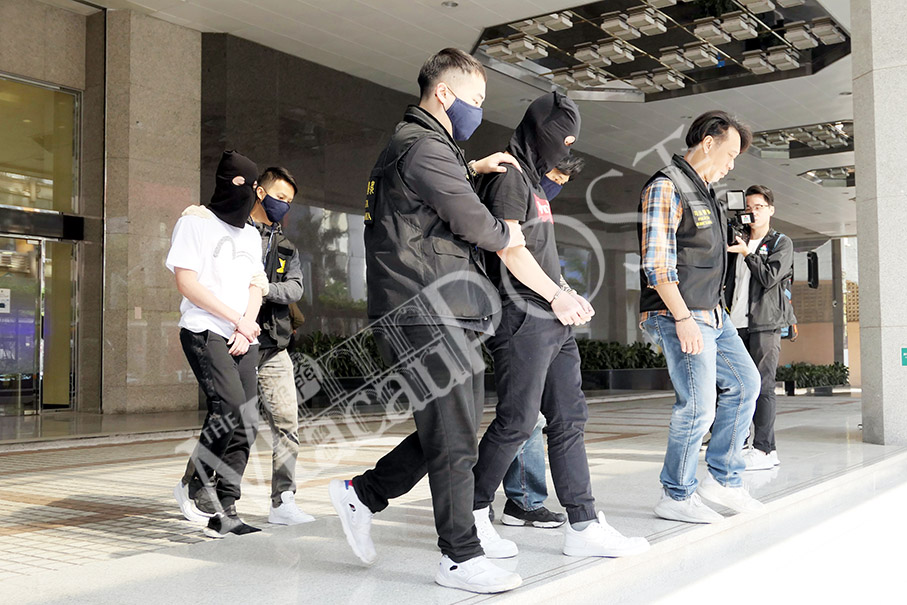The Urban Planning Council (CPU) yesterday discussed the government’s plan to build an underground car park outside the Legislative Assembly (AL) building in Nam Van – and a senior public works official said that the government was considering an automated parking system for the project.
Yesterday’s regular meeting of the council, held at the Transport Bureau (DSAT), included a discussion about the proposed legal development conditions for the project under a plot – currently a green area – outside the Legislative Assembly (AL).
Theoretically, the legal development conditions propose a height limit of 18 metres for the project on the plot covering an area of 2,656 square metres.
Officials from the Lands, Public Works and Transport Bureau (DSSOPT) told the meeting that the underground car park would only be for those working in the legislature. The project would include an underground passage connecting the existing underground car park under the building of the legislature, the officials said.
Councillor Rui Miguel Rebelo Leão, an architect by profession, pointed out that the proposed height limit of 18 metres for the project would be the same height as the Legislative Assembly building. He said he was worried that the project will block the view of the building.
In response, DSSOPT Director Li Canfeng, who chaired the meeting, noted that 18 metres is the maximum height allowed in the area.
DSSOPT Deputy Director Cheong Ion Man said that the green area on the 2,656 square metre plot will be kept “as much as possible”. He also said that the structure above the ground on the plot for the underground car park project would be designed in a way that the view of the legislature’s building will be kept intact “as much as possible”.
Councillor Mak Soi Kun, a lawmaker and building contractor, questioned whether the government plans to use an automated car parking system (APS) for the project. In response, Li said that the government was considering the option because an APS could accommodate more cars.
According to Wikipedia, an automated parking system is a mechanical system designed to minimise the area and/or volume required for parking cars. Like a multi-storey car park, an APS provides parking for cars on multiple levels stacked vertically to maximise the number of parking spaces while minimising land usage. The APS, however, utilises a mechanical system to transport cars to and from parking spaces – rather than the driver – in order to eliminate much of the space wasted in a multi-story car park.
Li said his bureau would present the plan for the project to the council for another discussion after it finishes a detailed design.
Redevelopment of Sacred Heart Canossian College
Meanwhile, the council yesterday also discussed the redevelopment plan for Sacred Heart Canossian College in Avenida do Coronel Mesquita.
The legal development conditions for the school’s redevelopment project propose a height limit of 50 metres. The plot covers an area of 8,675 square metres. Currently, the school buildings on the plot are about 20 metres high.
According to the legal development conditions for the redevelopment project, the school plans to construct buildings covering 80 percent of the area of the plot while the remaining area would be an outdoor area – as opposed to the current situation in which buildings cover 65 percent of the area of the plot.
Councillor Lam Iek Chit, an urban planner by profession, said that the proposed increased percentage for buildings on the plot would decrease the outdoor area that the pupils can enjoy. He said that the current 65 percent of the area for the construction of buildings should remain unchanged.
Li responded his bureau set the 80 percent of the area for buildings on the plot in line with a recommendation by the Education and Youth Affairs Bureau (DSEJ).
Li said he believed that the school would design its redevelopment project on the campus based on the real situation – meaning that the school may not construct buildings covering the permitted maximum percentage of the area on the plot – 80 percent.
Li said that his council would ask DSEJ officials to attend the council’s meetings in the future whenever its meetings include discussions about proposed legal development conditions for school projects.
Lands, Public Works and Transport Bureau (DSSOPT) Director Li Canfeng (centre, right) presides over yesterday’s meeting of the Urban Planning Council (CPU) at the Transport Bureau (DSAT) Building. Photo: Tony Wong









